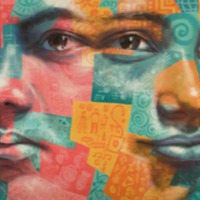
Jaya
The Global Slavery Index 2018 estimates that on any given day there were nearly 8 million people living in modern slavery in India. The GSI 2018 reports an emerging trend in northeast India where organised trafficking syndicates operate along the open and unmanned international borders, duping or coercing young girls seeking employment outside their local area in to forced sexual exploitation. Many women and girls are lured with the promise of a good job but then forced in to sex work, with a 'conditioning' period involving violence, threats, debt bondage and rape. Jaya grew up in a brothel in India, subjected to rape and sexual violence daily from an early age. Jaya’s exploitation finally ended one night when the police raided the brothel and arrested her trafficker.
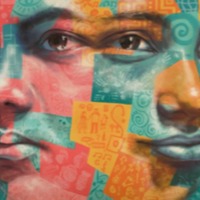
Soneeya
There are an estimated 171,000 people living in modern slavery in Nepal. Internal trafficking is significant in Nepal. Girls are trafficked internally for forced labour, sexual exploitation and forced marriage. A significant number of girls are estimated to be trafficked for sexual exploitation in Kathmandu’s entertainment sector and across the open border with India to Mumbai and other urban centres. Recent research in Kathmandu found that between 40 and 60 per cent of the females interviewed in entertainment sector workplaces (massage parlours, dance bars and cabin restaurants) were under the age of 19. Poverty is a significant driving factor for the exploitation and forced marriage of young girls in the country as although levels are declining, an estimated 10 million people live on incomes between USD1.90 and USD3.20 a day. When Soneeya was 15 years old, she was forced to marry a man 13 years older. She was subjected to physical and sexual abuse daily.
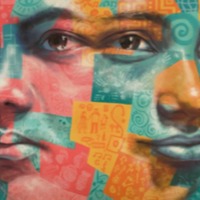
Shin Don Hyuk
The Global Slavery Index 2018 estimates that there are 2,640,000 people living in conditions of modern slavery in The Democratic People’s Republic of Korea (North Korea). Men, women and children are subjected to forced labour and sex trafficking. Government oppression in the DPRK prompts many North Koreans to flee the country in ways that make them vulnerable to human trafficking in destination countries. Many of the estimated 10 000 North Korean women and girls who have migrated illegally to China to flee abuse and human rights violation are particularly vulnerable to trafficking. Some lure, drug, detain or kidnap North Korean women on their arrival, others offer jobs but subsequently force the women into prostitution, domestic service, or forced marriage. If found, Chinese authorities often repatriate victims back to the DPRK where they are subjected to harsh punishment including forced labour in labour camps or death. Shin Don Hyuk was born in a political prison camp in North Korea. He recalls being under the constant supervision of armed guards who would tell him and the other children that they must work hard until they die to pay for the crimes of their parents. When he was 14 years old Shin Don Hyuk reported his parent’s plan to escape but instead of being rewarded was locked up and tortured alongside his family. He gives details of the torture he was subjected to and tells of the execution of his mother and brother. Shin Don Hyuk was able to escape and now tells of his experience to raise awareness of conditions in North Korean prison camps in the hopes of liberating the people kept there.
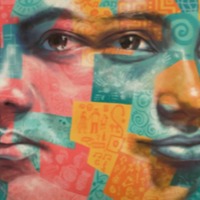
Musa
There are an estimated 36,000 people living in conditions of modern slavery in Sierra Leone (GSI 2018). Sierra Leone is a source and destination country for men, women and children subjected to forced labour and sex trafficking. During the Sierra Leone Civil War 1991 to 2002 the Revolutionary United Front (RUF) sought to mobilise a youth underclass to form a ‘people’s army’ to overthrow the Momoh regime. The RUF abducted and trained numbers of captured youth to fight as child soldiers in their guerrilla warfare. Musa, now about 20, was captured and forcibly inducted by the RUF/SL in a raid into north-western Sierra Leone in January 1995. Although he completed guerrilla training and served on operations, he never gained any promotion in the movement, remaining ambivalent about the struggle. He is frank that his lack of conviction was more a question of the hardship than of any political objection. He found that the RUF's ideological teaching about the state of Sierra Leone made sense. When interviewed in October 1996 he had managed to escape four weeks previously, after nearly two years, and had been re-accepted in his home community, a town not badly affected by the war. Musa provides a remarkable account of RUF/SL aims and operations, and of life in one of the guerrilla camps. In some respects, the account supports the picture the movement paints in its own propaganda document (RUFSL, 1995). The Gurkhas referred to in the account were a mercenary force of ex-Gurkhas led by a Canadian Vietnam veteran [Colonel Robert Mackenzie] hired by the NPRC government. Mackenzie was killed, and the survivors were withdrawn shortly afterwards, to be replaced by the South African private security firm Executive Outcomes.]
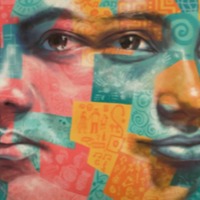
Gabriel
There are an estimated 36,000 people living in conditions of modern slavery in Sierra Leone (GSI 2018). Sierra Leone is a source and destination country for men, women and children subjected to forced labour and sex trafficking. During the Sierra Leone Civil War 1991 to 2002 the Revolutionary United Front (RUF) sought to mobilise a youth underclass to form a ‘people’s army’ to overthrow the Momoh regime. The RUF abducted and trained numbers of captured youth to fight as child soldiers in their guerrilla warfare. Gabriel* was captured as a youth in a raid by the Revolutionary United Front (RUF) in Sierra Leone. Gabriel tells of how he escaped from the militant forces after being held for a week.

Saw Htoo
According to the Global Slavery Index, there are an estimated 575,000 people living in modern slavery in Myanmar (formerly Burma). Some Tatmadaw personnel, civilian brokers, border guard officials, and EAGs continue to recruit or use child soldiers, particularly in conflict-affected ethnic areas. Civilian recruiters in some cases coerce or offer incentives to children or their families through false promises about working conditions, salary, and promotion opportunities. EAGs force men and boys to serve through intimidation, coercion, threats, arbitrary taxation, and violence. At the age of just 15, Saw Htoo was taken from him family and forcefully recruited into the Burmese military, the Tatmadaw.
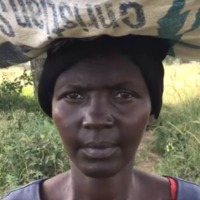
Adut Ageny
There are an estimated 465,000 people living in modern slavery in Sudan (GSI 2018). Between 1983 and 2005, the central government of Sudan enslaved tens of thousands of black South Sudanese Christian and traditionalist people. It was part of a genocidal war against South Sudan, with a simple aim: to force South Sudan to become Arab and Muslim. Adut Ageny was abducted from her village and held in enslavement for five years when she was a child.
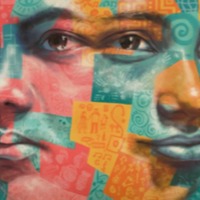
Flora
There are an estimated 403,000 people living in modern slavery in the United States (GSI 2018). Sex trafficking exists throughout the country. Traffickers use violence, threats, lies, debt bondage and other forms of coercion to compel adults and children to engage in commercial sex acts against their will. The situations that sex trafficking victims face vary, many victims become romantically involved with someone who then forces them into prostitution. Others are lured with false promises of a job, and some are forced to sell sex by members of their own families. Victims of sex trafficking include both foreign nationals and US citizens, with women making up the majority of those trafficked for the purposes of commercial sexual exploitation. In 2015, the most reported venues/industries for sex trafficking included commercial-front brothels, hotel/motel-based trafficking, online advertisements with unknown locations, residential brothels, and street-based sex trafficking.Flora was trafficked in to prostitution at the age of 14 when she ran away from home after her mother committed suicide. She left with who she thought was her boyfriend, however within a week he had trafficked her to a different state and she was forced to provide sexual services.
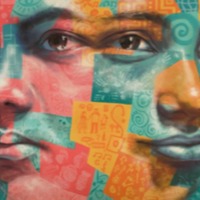
David Ninteretse
In 1993, Burundi’s first democratically elected president was assassinated in a coup d’état. Melchior Ndadaye, of the majority Hutu ethnic group, had sought during his three months in office to ease tensions between Hutu and the minority Tutsi, which had ruled Burundi for decades and continued to dominate the army. In response, Hutu paramilitary groups formed, and as quid pro quo attacks between Hutu and Tutsi escalated, Burundi spiraled into civil war.Among the many victims of the war were children. Indignant over Ndadaye’s death and the denial of political power the Hutu believed their due, extremist factions exhorted teenagers and even younger children to join their ranks, and for more than a decade, thousands of children lived in Burundi’s forests in deplorable conditions, raiding villages, camps, and military installations, both suffering and committing horrific violence. Many were girls kept as sexual slaves for older soldiers David became involved in the Burundi Democratic Youth when he was 15 years old. After the coup in 1993, he became a Hutu child soldier, David tells of the hunger and abuse he faced as a child soldier as he was forced to walk barefoot for days with little food and water. David tells of his experience as a child soldier, his attempts to gain an education to become a political leader, and his retirement.
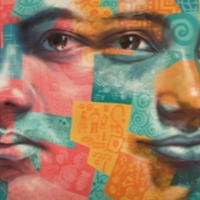
Heyab
There are an estimated 451,000 people living in modern slavery in Eritrea (GSI 2018). The small country has a unique system of compulsory, open-ended military service for citizens that makes it one of the most oppressive states in the world. The government has enforced its current policy of sending all secondary school students to serve for a minimum of twelve months since 2003. While Eritrean law puts the minimum conscription age at 18, many teenagers find themselves recruited during high school at age 16 or even younger. In rural areas, where formal education is rarer, the army will visit villages to round up young girls and boys who look roughly of age, to begin their program of combat training and forced labour. Heyab was caught trying to flee the country in 2009 when she was 16 years old and imprisoned for eight months. While in prison she was subjected to physical abuse and beatings.
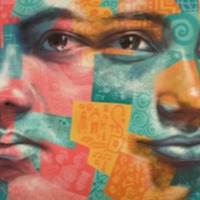
Kidane
There are an estimated 451,000 people living in modern slavery in Eritrea (GSI 2018). The small country has a unique system of compulsory, open-ended military service for citizens that makes it one of the most oppressive states in the world. The government has enforced its current policy of sending all secondary school students to serve for a minimum of twelve months since 2003. While Eritrean law puts the minimum conscription age at 18, many teenagers find themselves recruited during high school at age 16 or even younger. In rural areas, where formal education is rarer, the army will visit villages to round up young girls and boys who look roughly of age, to begin their program of combat training and forced labour. Kidane was 16 years old when he was sent for military training at Sawa. After training he was forced to work in farming and construction, until he was able to flee the country in 2012.
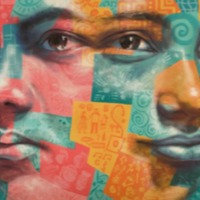
Joelle
There are an estimated 1,045,000 people living in conditions of modern slavery in the Democratic Republic of Congo (GSI 2018). In 2016 several armed groups continued to abduct and forcibly recruit men, women and children as combatants and in support roles such as guards, cleaners, cooks and spies. In 2016, 184 cases of child soldiers were reported, with 1,662 children reported to have separated or escaped from armed groups. Child soldiers who manage to escape remain vulnerable to re-recruitment as adequate rehabilitation services remain unavailable to children suffering trauma, stigmatisation and the continued threat of armed groups. Joelle was 15 years old when she was kidnapped by NDC/Cheka (Nduma défense du Congo/Cheka) elements.
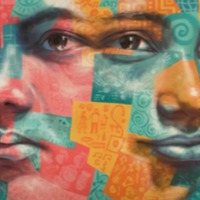
Violette
There are an estimated 1,045,000 people living in conditions of modern slavery in the Democratic Republic of Congo (GSI 2018). In 2016 several armed groups continued to abduct and forcibly recruit men, women and children as combatants and in support roles such as guards, cleaners, cooks and spies. In 2016, 184 cases of child soldiers were reported, with 1,662 children reported to have separated or escaped from armed groups. Child soldiers who manage to escape remain vulnerable to re-recruitment as adequate rehabilitation services remain unavailable to children suffering trauma, stigmatisation and the continued threat of armed groups. Violette was 12 years old when she was abducted by armed forces in the Democratic Republic of Congo.
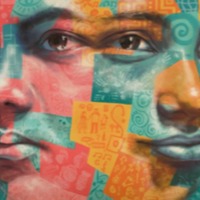
Q
There are an estimated 610,000 people living in conditions of modern slavery in Thailand (GSI 2018). The country's commercial sex industry remains vast, increasing vulnerabilities for sex trafficking. Children are victims of sex trafficking in brothels, massage parlours, bars, karaoke lounges, hotels and private residences. Q was told she would be going a job to help her family. However, she soon learned that her mother had sold her virginity. She was kept in a man’s apartment for 2 days and subjected to sexual abuse. After 2 days she returned home only to find that her mother had sold her again.
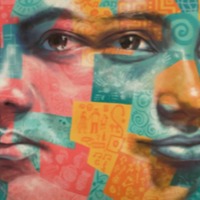
Shabnam
It is estimated that almost 8 million people are living in conditions of modern slavery in India (GSI 2018). Around 27% of girls are married before their 18th birthday. The skewed sex ratio in some regions of India has fuelled the trafficking and selling of women and young girls as brides within India. Women are reportedly sold off into marriage by their families, sometimes at a young age, and end up enduring severe abuse, rape and exploitation by their husbands. It is also reported that women and girls from impoverished backgrounds have been lured by promises of marriage by younger men from urban areas, then forced into sex work once married. Shabnam was forced to marry at the age of 13. She tells of how her husband attempted to poison her and poisoned her son. Shabnam finally asked for a divorce and with the help of the Centre for Social Research is now free.
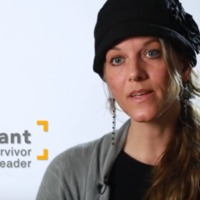
Tricia Grant
There are an estimated 403,000 people living in modern slavery in the United States (GSI 2018). Sex trafficking exists throughout the country. Traffickers use violence, threats, lies, debt bondage and other forms of coercion to compel adults and children to engage in commercial sex acts against their will. The situations that sex trafficking victims face vary, many victims become romantically involved with someone who then forces them into prostitution. Others are lured with false promises of a job, and some are forced to sell sex by members of their own families. Victims of sex trafficking include both foreign nationals and US citizens, with women making up the majority of those trafficked for the purposes of commercial sexual exploitation. In 2015, the most reported venues/industries for sex trafficking included commercial-front brothels, hotel/motel-based trafficking, online advertisements with unknown locations, residential brothels, and street-based sex trafficking. Tricia Grant was approached by two men offering a way for her to make some money to support her son. However, upon arriving at the address she was given, Tricia was forced to provide sexual services against her will. The men threatened to take away her son if she refused.
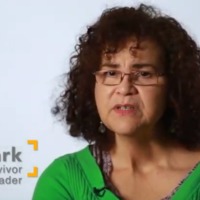
Dee Clark
There are an estimated 403,000 people living in modern slavery in the United States (GSI 2018). Sex trafficking exists throughout the country. Traffickers use violence, threats, lies, debt bondage and other forms of coercion to compel adults and children to engage in commercial sex acts against their will. The situations that sex trafficking victims face vary, many victims become romantically involved with someone who then forces them into prostitution. Others are lured with false promises of a job, and some are forced to sell sex by members of their own families. Victims of sex trafficking include both foreign nationals and US citizens, with women making up the majority of those trafficked for the purposes of commercial sexual exploitation. In 2015, the most reported venues/industries for sex trafficking included commercial-front brothels, hotel/motel-based trafficking, online advertisements with unknown locations, residential brothels, and street-based sex trafficking. Dee was in and out of foster care as a child. At the age of 12 she was taken to a party where a man invited her back to his apartment. Once there, Dee was taken to a pimp named Red and subjected to commercial sexual exploitation. She was arrested for prostitution at 13 years old. Dee talks about the hardship of recovery and finding support after escaping the life and now works to support other survivors of sex trafficking.
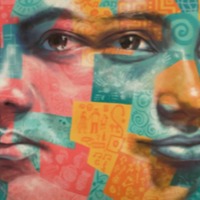
Francis Bok
There are an estimated 465,000 people living in modern slavery in Sudan (GSI 2018). Between 1983 and 2005, the central government of Sudan enslaved tens of thousands of black South Sudanese Christian and traditionalist people. It was part of a genocidal war against South Sudan, with a simple aim: to force South Sudan to become Arab and Muslim. Francis was seven years old when he was taken by North Sudanese militia and enslaved on a farm in North Sudan. He was beaten and force to sleep with the animals. After 10 years Francis was finally able to escape. He now travels around with antislavery organisations telling his story and raising awareness of modern day slavery.
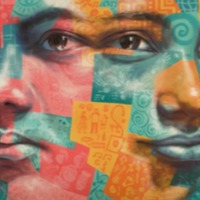
John
There are an estimated 403,000 people living in modern slavery in the United States (GSI 2018). Sex trafficking exists throughout the country. Traffickers use violence, threats, lies, debt bondage and other forms of coercion to compel adults and children to engage in commercial sex acts against their will. The situations that sex trafficking victims face vary, many victims become romantically involved with someone who then forces them into prostitution. Others are lured with false promises of a job, and some are forced to sell sex by members of their own families. Victims of sex trafficking include both foreign nationals and US citizens, with women making up the majority of those trafficked for the purposes of commercial sexual exploitation. In 2015, the most reported venues/industries for sex trafficking included commercial-front brothels, hotel/motel-based trafficking, online advertisements with unknown locations, residential brothels, and street-based sex trafficking. John was 4 years old when his father started selling him for sex. At the age of 16, he was abandoned on the street and forced to continue selling himself for sex to survive. He knew no different.
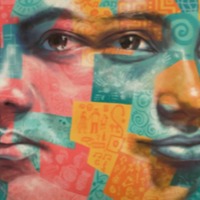
Sadhna
The Global Slavery Index 2018 estimates that on any given day there were nearly 8 million people living in modern slavery in India. The GSI 2018 reports an emerging trend in northeast India where organised trafficking syndicates operate along the open and unmanned international borders, duping or coercing young girls seeking employment outside their local area in to forced sexual exploitation. Many women and girls are lured with the promise of a good job but then forced in to sex work, with a 'conditioning' period involving violence, threats, debt bondage and rape. Sadhna was 11 years old when her father passed away. Her family was left with no money in their village, so they moved to Kolkata in search of work. Sadhna was struggling as a house cleaner when a local woman offered her a new job. Sadhna followed the woman to a house filled with strange men and beer. She was given a glass of water and immediately fell unconscious. She woke to find she had been raped and was now to be sold for sex from a private brothel, she was 14 years old. Sadhna was rescued by IJM and now shares her story with other girls in India.